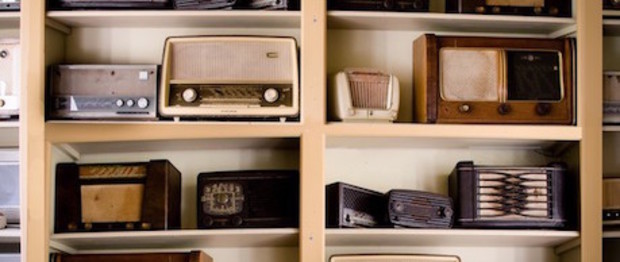Last week during our Audio Storytelling class at the University of Oregon, we discussed a number of different permutations for telling a strong audio story in a short space of time. Hopefully this gives you confidence that, yes, you can craft a good piece of audio storytelling that can be anything from 60 seconds to two-three minutes.
Here are 10 potential formats you could use:
1. Traditional news bulletin (presenter read)
Not so common now, but you can sometimes hear stories — and sometimes entire short news bulletins — which are just a newsreader and a script.
2. Traditional news bulletin (presenter read + clips)
An example of this is the NPR hourly news summary and you can also find traditional style bulletins from AP, Fox and others. The traditional bulletin style (presenter read + short clip) remains an effective way to get across the key points and developments of the day, quickly.
3. The 'I was there' recollection (two-way/interview and subject)
We previously listened to examples of this format from the BBC World Service, with their show Witness: “The story of our times told by the people who were there.”
At eight-nine minutes it’s a bit longer, but you can still use this storytelling technique for shorter pieces. This show blends archive footage and new recollections, to tell the story of a key moment or experience.
In this recollective vein, also check out this interview with CBS news legend, Bob Schieffer, part of a week’s worth of coverage marking the 50th anniversary of President John F. Kennedy’s assassination.
4. The 'journalistic' monologue
Listen to the BBC’s From Our Own Correspondent for great examples of this. Short stories with no bells and whistles, just great scripts from master storytellers and reporters. According to an article in the Guardian:
“No interviews are included, there are no sound effects; no creaking doors, no footsteps, no noises off at all. Just the voices of the correspondents reading their scripts. As BBC senior correspondent Fergal Keane puts it: 'Fooc is a programme which promotes story-telling rather than story-processing. It is the best programme we have in news.'"
Here are 12 case studies from the show to listen to; including this one, which we heard in class about a nurse working with Ebola victims in Liberia. The piece is short, but punchy, and full of powerful evocative, description. You can read some scripts from the show if you look at the preview of this book.
5. The 'everyman' monologue
There are some great US-originated monologues of everyday people captured by StoryCorps.org. Listen to these two examples (they’re just under five minutes in total) of single memorable — and life changing – experiences.
Thomas Weller explains how he got started helping strangers in need, whilst New York City bus operator Ronald Ruiz tells us what happened when he helped one of his passengers on the City Island line in the Bronx.
6. The 'nat sound' monologue
Edward Murrow’s WW2 broadcasts from London were pioneering. The natural sound in this extract is quiet in the mix, but Murrow’s report from the rooftop of BBC Broadcasting House (not disclosed at the time, for security reasons) whilst London was bombed by the Germans is a ground-breaking piece of radio storytelling. Want more? Here’s the transcript.
7. 'In the field' reporting
Skip the ads and jump to minute 2:21 of the episode below. The first two-three minutes help set the up the rest of the story, but it also works as a great opening (and potentially standalone) vignette.
8. The two-hander
'Stuff you missed in history class' is a popular example of this. No interviews, FX etc. Just two people talking. In the process, the presenters walk you through a famous (often quirky or long-forgotten) event or incident from the past.
Shows are typically 30–45 minutes long, but you could easily adopt this format for shorter, discursive pieces. Introductory pieces in shows like This American Life often do this well.
9. The three-hander
Can be used for comedy – like The Ricky Gervais Show – as well as other formats, such as the BBC’s Great Lives, a biographical series in which a guest and an “expert witness” discuss an inspirational life.
Here’s where Gervais’ record-breaking series all began.
10. Multiple voices, no narrator
Last week, Professor Rob Quicke, an associate professor of communication at William Paterson University and the founder of World College Radio Day, told us: “The journalist is not the story, the interviewee is, so you’ve got to remove yourself as much as possible.”
One of the ways that Quicke has done this in his own work is by letting the voice of his interviewees drive a story forward. The two-minute piece below, about a radio station Rob worked on in the 90s (as did I), whilst still a student at Oxford , uses just the voice of his contributors to move the narrative on.
It’s a format that requires a lot of editing, but it holds your attention and puts the contributors front and center in the unfolding story.
This post was originally published on Medium and is featured on Journalism.co.uk with the author's permission.
Damian Radcliffe is Carolyn S. Chambers Professor in Journalism at the University of Oregon. Find him on Twitter @damianradcliffe.
Free daily newsletter
If you like our news and feature articles, you can sign up to receive our free daily (Mon-Fri) email newsletter (mobile friendly).
Related articles
- How Reuters, Newsquest and BBC experiment with generative AI
- Standing out in a crowded market: what makes a top news podcast?
- How can UK commercial local news media respond to BBC expansion?
- 39 media podcasts that should be on every journalist's radar in 2023
- European broadcasters must address on-screen diversity










